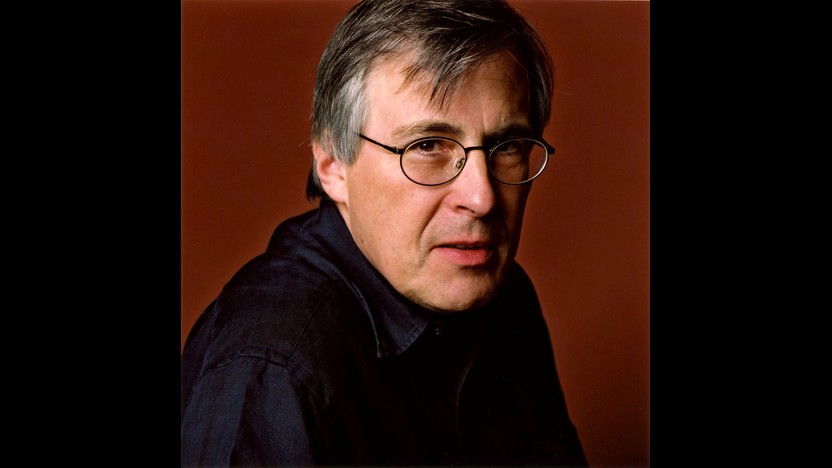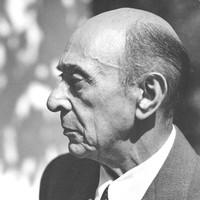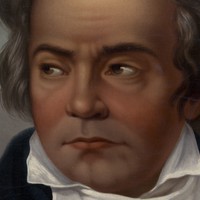Beethoven’s Emperor Concerto

Sponsored By
- September 26-29, 2013


Sponsored By


For decades, Haydn spent as many as ten months of each year sequestered at his patron’s isolated countryside summer palace, Esterháza, but he did not let his distance from Vienna and other musical capitals prevent him from capitalizing on his increasing fame. A new contract he negotiated in 1779 freed him to sell and publish more music outside of the Esterházy court, and Paris soon became a Haydn hotspot. A young Frenchman, the Count d’Ogny, commissioned six symphonies for the handsome sum of 25 louis d’or each, plus additional fees for publication. (By comparison, Mozart earned only 5 louis d’or for his “Paris” Symphony from 1778.) Haydn’s “Paris” Symphonies, Nos. 82-87, debuted in 1785 and 1786, performed by the massive Orchestra of the “Olympic” Lodge, a semi-professional group that dwarfed Haydn’s private Esterházy ensemble. On the strength of those symphonies—which earned even Queen Marie Antoinette’s admiration—the Count d’Ogny commissioned three more symphonies, Nos. 90-92. Haydn dedicated the new works to the French count, but he also sold them to a Bavarian prince to generate some extra income.
Every Haydn symphony after No. 91 includes trumpets and timpani, and five of the last six “London” symphonies (written for the English capital) further expand the sonic palette with clarinets. Symphony No. 91, in contrast, bolsters the strings with just a small wind section—one flute plus pairs of oboes, bassoons, and horns—and its musical material reflects the intimate scoring. The broad Largo introduction establishes a rounded, three-beat meter, and the Allegro assai body of the movement continues in the same smooth pulse. The new tempo enters with a slurred, chromatic motive that rises and falls throughout the remainder of the movement and returns in other guises later in the symphony.
The Andante slow movement enters in the style of an old gavotte dance, tapping out two prominent upbeats. The bassoon takes a solo variation, encircled by active violins, and a minor-key variation adds a touch of drama. In the final variations, the running bass, dotted (short-long) rhythms, and trills play up the antique aspects of the music.
In the Menuet, chromatic figures recall the opening movement, while the contrasting trio section again features the bassoon, echoing the Andante. The finale builds up from the whisper-quiet texture of violins and violas, and the chromatic gamesmanship returns once more, reinforcing this mild-mannered symphony’s characteristic stamp.
Aaron Grad ©2011

Arnold Schoenberg is most famous — or perhaps infamous — for pioneering atonality and the twelve-tone method of composition. Despite all the “accusations of anarchy and revolution” directed his way over the years, his own view (as he explained in a 1949 lecture) was that his development as a composer “was distinctly evolution, no more exorbitant than that which always has occurred in the history of music.”
The Chamber Symphony No. 2 came from a major inflection point in Schoenberg’s evolution. He started it in 1906 on the heels of the First Chamber Symphony, a hyper-dense score that pushed the logic of tonality to its breaking point. While midstream on the Second Chamber Symphony, he began experimenting with a new way of approaching his craft in other works, developing a style that drifted away from tonal rules toward a free atonality, guided by his own intuition. He tried picking the Chamber Symphony back up in 1911 and 1916, but the gap between his old and new working methods left him at an impasse.
Schoenberg evolved even further in the 1920s with his twelve-tone system, and with the rise of the Nazis in the 1930s, the Jewish composer went into exile, settling in Los Angeles. With some prodding by Fritz Stiedry, another Austrian expatriate who led an orchestra in New York, Schoenberg took up the Second Chamber Symphony once more, 33 years after he began it. He wrote to Stiedry, “I have been working on the second chamber symphony for a month now. I spend most of the time trying to discover ‘What did the author mean here?’ My style has now become very consolidated and it is now effortful to unify what I wrote down back then, justifiably trusting in my feeling for form, with my current extensive requirements for ‘visible logic.’”
Schoenberg only made minor changes in the Adagio first movement, adjusting some of the accompanying textures and adding twenty new measures at the end. The fiery second movement, on the other hand, required about half new material, including a final, epilogue-like section. The total effect is remarkably cohesive for a score assembled at opposite ends of Schoenberg’s continual evolution as a composer.
Aaron Grad ©2024
 Listen to Audio
Listen to Audio
Ludwig van Beethoven completed his fifth and final piano concerto during the miserable summer of 1809, when Napoleon’s army occupied Vienna for the second time in four years. By the time of the premiere two years later, Beethoven’s hearing had deteriorated so much that he could not perform the concerto himself. Having filled the void left by Wolfgang Amadeus Mozart’s death, Beethoven’s long run as the leading pianist-composer in Vienna had officially come to an end.
The Piano Concerto No. 5 is in many ways a sibling to the earlier “Eroica” Symphony No. 3, also in the key of E-flat. In the case of the concerto, Beethoven had no part in the nickname — “Emperor” came later from an English publisher — but both works share a monumental posture and a triumphant spirit.
To begin the concerto, the orchestra proclaims the home key with a single chord, and the piano leaps in with a virtuosic cadenza. The ensemble holds back its traditional exposition until the pianist completes three of these fanciful solo flights, the last connecting directly to the start of the movement’s primary theme. It is a remarkable structure for a concerto, with an assurance of victory, as it were, before the battle lines have been drawn.
The slow movement enters in the luminous and unexpected key of B-major with a simple theme, first stated as a chorale for muted strings. To bridge the distance back to the home key of E-flat, the finale pivots effortlessly on a single held note that relaxes down a half-step, setting up the piano’s propulsive entrance.
Aaron Grad ©2022
Get driving directions and find nearby parking.
Find dining options close to the venue.
View seating charts to find out where you'll be seating.
Get driving directions and find nearby parking.
Find dining options close to the venue.
View seating charts to find out where you'll be seating.
